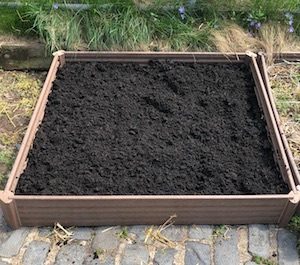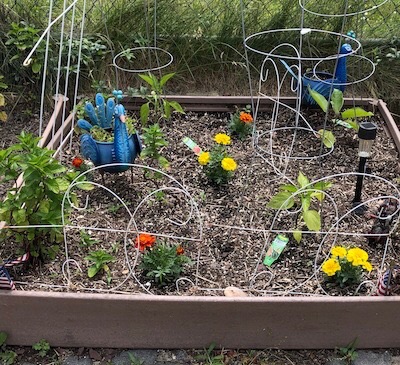Around the Vegetable Patch
Nothing is more rewarding than growing your own vegetables and herbs. Imagine gathering fresh produce to make a salad right from your backyard. Whether you are an experienced gardener or you’re new to gardening, here are a few tips on how to plant your dream vegetable garden.
The Dirt
If you feel you need to incorporate new soil for your garden patch or if this is your first time preparing a vegetable garden, Home Depot and Lowe’s always have bags of soil on sale during the spring. Keep in mind that organic soil is pricer than regular soil. The difference is that organic soil contains minerals and nutrients from decayed plants and manure. Regular garden soil contains no nutrients, however, that doesn’t mean your plants won’t thrive. I’ve used regular soil for the longest time and my flowers and vegetables have done well. And you can always add natural fertilizer to the soil by adding eggshells and coffee grinds. You can also buy manure to enrich your new soil.

The Layout
Once you have your dirt and have purchased your vegetable plants, you should arrange your vegetables exactly where you want to plant them. Vegetables like cucumbers, zucchini, and squash need lots of space to spread their vines. Also, tomato plants need support so the weight of the tomatoes won’t drop down. Invest in a bamboo trellis or metal vegetable cage to support your plants. And you might want to invest in a garden fence to keep groundhogs and rabbits from munching on your produce before you do.

Get To It
With gardening comes a lot of trial and error. Not to mention that your plants’ survival also depends on the weather. Too much or not enough rain can affect the quantity of vegetables you’ll have. Here’s a list to help guide you during the harvest season.
- Label your vegetable plants
- Maintain your vegetable garden periodically by removing any weeds
- Watch for any signs of pests or fungus growth
- Use old broomsticks and other poles should your plants need extra support
- Trim dead leaves/vines and remove any other debris
- Collect ripened veggies before the neighborhood groundhog or rabbit does
- Keep a journal to keep track of when you water your garden
So whether you are new to gardening or have a natural green thumb, planting a vegetable garden is hard work. The key to a successful harvest is preparing your garden before planting, followed by taking care of your garden all summer long. Start by designing the garden layout. Then prep your designated vegetable patch by adding a mix of fresh soil, compost, and manure. Maintain your garden by tackling weeds and unwanted pests. And finally, use a journal to keep track of when you water your garden. With these garden steps and a little love, you’ll have homegrown produce by the end of the summer.

Happy Gardening!